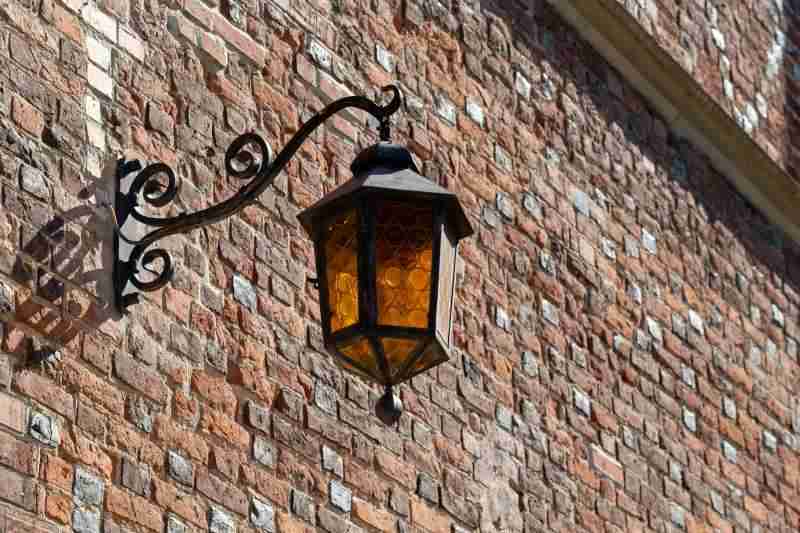When it comes to enhancing the beauty of your home, the right lighting can make all the difference. Architectural features, such as elegant columns, intricate moldings, and stunning facades, can be beautifully accentuated with strategic lighting techniques. In this blog, we will explore how to highlight architectural features with lighting, transforming your home into a captivating work of art. With professional outdoor lighting services from TRANSFORM YOUR HOME INTO A WORK OF ART, led by David Kraus, you can elevate your property’s aesthetic appeal and create an inviting atmosphere. Our unique outdoor lighting solutions not only enhance the beauty of your home but also ensure safety and security. Join us as we delve into the best practices for showcasing your home’s architectural details, making it a standout in your neighborhood. Whether you’re looking to impress guests or simply enjoy your space more, the right lighting can truly transform your environment—one home at a time.
Understanding the Importance of Architectural Lighting

Architectural lighting plays a crucial role in enhancing the aesthetic appeal and functionality of buildings. It not only illuminates structures but also accentuates their unique features, creating a captivating visual experience. Properly designed lighting can transform ordinary spaces into extraordinary environments, highlighting textures, colors, and architectural details that might otherwise go unnoticed.
Effective architectural lighting can improve safety and security, guiding visitors and residents through outdoor and indoor spaces. According to the Illuminating Engineering Society, well-planned lighting can increase visibility by up to 50%, significantly reducing accidents and enhancing the overall experience of a space.
Moreover, lighting can influence mood and perception. As renowned architect Louis Kahn once said, “The sun never knew how great it was until it hit the side of a building.” This quote underscores the transformative power of light in architecture.
To achieve optimal results, consider the following strategies:
- Use accent lighting to draw attention to specific architectural features.
- Incorporate ambient lighting to create a welcoming atmosphere.
- Utilize task lighting for functional areas, ensuring safety and usability.
For more insights on enhancing your property’s appeal through lighting, explore our services or visit our blog for expert tips. If you’re ready to transform your space, get a free quote today!
Types of Lighting Techniques for Architectural Features

When it comes to enhancing architectural features, the right lighting techniques can make all the difference. Various methods can be employed to showcase the unique elements of a structure, creating a captivating visual experience. One popular technique is uplighting, where lights are positioned at the base of a building or feature, casting a warm glow upwards. This method emphasizes textures and shapes, adding depth and drama to the architecture.
Another effective approach is downlighting, which involves placing fixtures above the feature to cast light downward. This technique is particularly useful for highlighting entryways, columns, or intricate details on facades. Additionally, wall washing is a technique that spreads light evenly across a surface, perfect for illuminating large walls or artwork without creating harsh shadows.
For those looking to create a more dynamic effect, consider using color-changing lights. This innovative technique allows for customization, enabling different moods and themes to be expressed throughout the year. By strategically combining these lighting techniques, you can transform ordinary architectural features into stunning focal points.
To explore more about how to enhance your property’s appeal through lighting, visit our services page or check out our gallery for inspiration. If you have questions or need assistance, feel free to contact us today!
Choosing the Right Fixtures for Your Space

Selecting the appropriate lighting fixtures is crucial for effectively highlighting architectural features in your space. The right fixtures not only enhance the aesthetic appeal but also draw attention to the unique elements of your architecture, such as columns, arches, and textured walls. When choosing fixtures, consider the scale and style of your space. Larger areas may benefit from statement fixtures that create a focal point, while smaller spaces might require more subtle lighting options to avoid overwhelming the design.
Additionally, think about the type of lighting you want to achieve. Accent lighting can be used to illuminate specific features, while ambient lighting provides overall illumination. For instance, wall sconces can beautifully accentuate a textured wall, while recessed lighting can create a clean, modern look that highlights architectural lines.
It’s also essential to consider the color temperature of the bulbs you choose. Warmer tones can create a cozy atmosphere, while cooler tones can lend a more contemporary feel. For expert advice on selecting the perfect fixtures for your needs, visit our about us page or explore our services to see how we can assist you. Don’t hesitate to contact us for personalized recommendations tailored to your space.
Creating Depth and Dimension with Shadows
Shadows play a crucial role in enhancing the visual appeal of architectural features. By strategically placing lighting fixtures, you can create a dynamic interplay of light and shadow that adds depth and dimension to your outdoor spaces. This technique not only highlights the unique characteristics of your architecture but also transforms flat surfaces into engaging visual experiences.
When illuminating walls, columns, or sculptures, consider using uplighting to cast shadows that emphasize textures and shapes. For instance, a well-placed spotlight can create elongated shadows that draw attention to the architectural lines of a building, making it appear more three-dimensional. Additionally, downlighting can soften harsh edges and create a warm ambiance, enhancing the overall aesthetic.
Incorporating shadows into your lighting design can also improve safety by illuminating pathways and entrances while maintaining an inviting atmosphere. This balance is essential for creating a welcoming environment that showcases your property’s best features.
For more insights on how to effectively use lighting to enhance your outdoor spaces, visit our blog or explore our services. If you’re ready to elevate your property’s design, don’t hesitate to get a free quote today!
Enhancing Textures and Materials through Lighting
Lighting plays a crucial role in enhancing the textures and materials of architectural features, transforming ordinary spaces into extraordinary visual experiences. By strategically placing lights, you can accentuate the unique characteristics of various surfaces, such as brick, stone, wood, and metal. For instance, uplighting can create dramatic shadows that highlight the rough textures of stone walls, while downlighting can illuminate the fine details of intricate woodwork. This interplay of light and shadow not only adds depth but also brings out the natural beauty of the materials used in construction.
Moreover, the color temperature of the lighting can significantly affect how textures are perceived. Warm lights can create a cozy atmosphere, enhancing the richness of wooden surfaces, while cooler lights can give a modern edge to metal and glass features. Utilizing different lighting techniques, such as grazing or washing, allows for a more dynamic presentation of architectural elements, making them stand out even more.
For those looking to elevate their outdoor spaces, professional lighting services can provide tailored solutions to highlight your property’s unique features. Explore our services to discover how we can help you achieve the perfect ambiance. If you have any questions or need assistance, feel free to contact us for more information.
Integrating Smart Lighting Solutions for Flexibility
Incorporating smart lighting solutions into architectural design enhances both aesthetics and functionality, allowing for unparalleled flexibility in how spaces are illuminated. Smart lighting systems enable users to adjust brightness, color, and even the direction of light, creating dynamic environments that can adapt to various occasions and moods. This technology not only highlights architectural features but also enhances the overall ambiance of a space, making it more inviting and visually appealing.
With the ability to control lighting remotely via smartphones or automated systems, homeowners and businesses can easily modify their lighting setups to showcase specific elements of their architecture, such as unique facades, intricate details, or landscaping. This adaptability is particularly beneficial for outdoor settings, where lighting can be tailored to enhance the beauty of gardens, pathways, and architectural structures at night.
Moreover, integrating smart lighting solutions can lead to energy savings and increased sustainability. By utilizing LED technology and smart controls, users can reduce energy consumption while still achieving stunning visual effects. For those interested in exploring how smart lighting can transform their spaces, our services offer a range of options tailored to individual needs. To learn more about our approach and expertise, visit our about us page or contact us for a consultation.
Case Studies: Successful Architectural Lighting Projects
Exploring successful architectural lighting projects provides valuable insights into how effective lighting can enhance and highlight architectural features. These case studies showcase innovative designs that not only illuminate structures but also create a captivating ambiance. For instance, a prominent museum used dynamic LED lighting to accentuate its unique façade, transforming it into a vibrant landmark at night. This approach not only draws attention to the building’s intricate details but also enhances the visitor experience.
Another notable project involved a historic theater where strategic uplighting was employed to emphasize its ornate architecture. By using warm tones and adjustable fixtures, the lighting design preserved the building’s character while making it a focal point in the urban landscape. Such projects demonstrate the importance of understanding the interplay between light and architecture, allowing designers to create visually stunning environments.
Incorporating architectural lighting can significantly elevate a space, making it more inviting and engaging. For those interested in learning more about how to implement similar strategies, our services page offers a comprehensive overview of lighting solutions tailored to various architectural styles. Additionally, our about us section provides insights into our expertise and approach to lighting design. For inspiration, visit our gallery to see examples of our successful projects.
In conclusion, effectively highlighting architectural features with lighting can transform a space, bringing out its unique characteristics and enhancing its overall aesthetic appeal. By understanding the principles of light and shadow, choosing the right fixtures, and strategically placing them, you can create a captivating atmosphere that showcases the beauty of your architecture. Whether you’re illuminating a grand entrance, accentuating intricate details, or creating a warm ambiance, thoughtful lighting design plays a crucial role in enhancing the architectural narrative. Remember to experiment with different techniques and consider the mood you wish to evoke, as the right lighting can not only highlight features but also elevate the entire experience of a space. Embrace the power of light, and let your architectural features shine!

